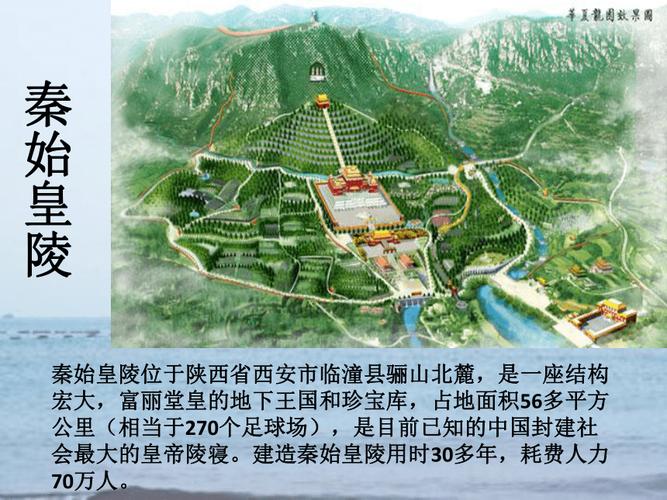
What are the Dimensions of the Mausoleum of the First Qin Emperor?
The Mausoleum of the First Qin Emperor, also known as Qin Shi Huang's mausoleum, is one of the most impressive and mysterious archaeological sites in the world. Located in Lintong District, Xi'an, Shaanxi province, China, this UNESCO World Heritage Site is a testament to the power and ambition of the first emperor of a unified China, Qin Shi Huang. The mausoleum complex is a vast underground city, covering an area of 56 square kilometers (21.6 square miles).
Symbolism of the Mausoleum
The entire mausoleum complex was meticulously designed to symbolize the emperor's power and his vision of the cosmos. The layout of the tomb mirrors the layout of the Qin capital city, Xianyang, with inner and outer walls, palaces, and other structures. It symbolizes the emperor's actual palace when he was alive, demonstrating his desire to continue his rule even in the afterlife.
Dimensions of the Central Burial Chamber
The most important part of the complex is the underground palace that houses the emperor's tomb. This rectangular-shaped burial chamber is situated in the middle of the palace, representing the emperor's central position in the cosmos. While the entire complex is vast, the dimensions of the burial chamber itself are as follows:
- Height: Approximately 15 meters (49 feet) high.
- Length: Estimates range from 100 to 110 meters (328 to 361 feet) long.
- Width: Estimates range from 64 to 75 meters (210 to 246 feet) wide.
To put this into perspective, the burial chamber alone covers an area comparable to a soccer field.
The Significance of the Dimensions
The sheer scale of the burial chamber is a powerful statement about Qin Shi Huang's status and ambitions. The height symbolizes his closeness to heaven, and the vast floor area emphasizes his earthly power and dominion. The dimensions also served a practical purpose, as they were necessary to accommodate the emperor's vast collection of treasures and the 7,000 life-size terracotta soldiers and horses that were buried with him.
Exploring the Mausoleum
Although the central tomb remains unexcavated due to concerns about preserving its contents, visitors to the Mausoleum of the First Qin Emperor can explore the surrounding pits that contain the famous Terracotta Army. These life-size figures, each with a unique face and posture, are an awe-inspiring sight and provide a glimpse into the military might of the Qin Dynasty.
FAQs
Q: Is the Mausoleum of the First Qin Emperor bigger than the Great Pyramid of Giza? A: In terms of ground area covered, the Qin Shi Huang's mausoleum complex (56 sq km) is significantly larger than the Great Pyramid of Giza (5.3 hectares or 0.053 sq km). However, the Great Pyramid is much taller, measuring 146.7 meters (481 feet) in height.
Q: Why hasn't the central tomb been excavated? A: Chinese archaeologists are taking a cautious approach to excavating the central tomb. There are concerns about preserving the fragile artifacts inside, as well as potential dangers from mercury, which is believed to have been used to create rivers and lakes within the tomb.
Q: What can I expect to see when visiting the Mausoleum of the First Qin Emperor? A: The main attractions are the pits containing the Terracotta Army. Visitors can also explore the museum on site, which houses artifacts unearthed from the complex. The surrounding area includes parks and gardens, offering picturesque views of the landscape.